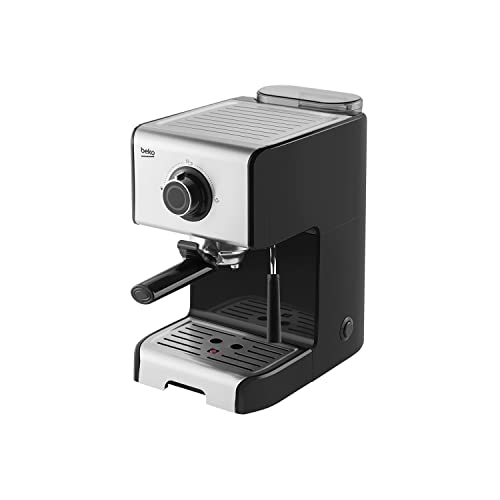What Is Coffee Machines Espresso And Why Are We Speakin' About It…
페이지 정보
Rosemary 작성일25-02-08 21:11본문
 Coffee and Espresso Machines
Coffee and Espresso MachinesEspresso machines use pressure to force water through finely ground and tamped coffee beans. They create a rich and delicious brew.
Experts from the Good Housekeeping Institute recommend models that brew at the minimum pressure of 9 bars to achieve optimal extraction. Beware of manufacturers who claim to use more pressure than is necessary.
Types
The espresso maker (also known as a coffee or espresso maker barista maker) produces coffee that is more concentrated, and of better quality, than your favorite cafe drinks. It uses an average of nine bars of pressure. These machines typically have many features, such as temperature control and brew strength with programmable brewing as well as different sizes of drinks. They can also have steam wands for manual or automatic use to create the appearance of latte art using texturized milk. There are three main types of semi-automatic, super-automatic, and automatic. Each one has its own level of oversight and automation.
The most popular espresso machine type for specialty coffee shops is the semi-automatic model. This gives baristas complete control over the brewing process, however, it's not as user-friendly as an automated or fully automatic machine. It is still necessary to grind beans, fill and tamp the portafilter, and adjust the extraction time to get the highest espresso maker for home shot of the highest quality.
Automated machines have built-in mills and can measure and measure your grounds and. They automatically disperse enough water to make espresso, and typically have the capacity to programate the size of the beverage. They were the most popular espresso machine types in our lab tests, and they provide a great level of consistency as well as human control.
Functions
There will be a need for a reservoir that can hold the water that you use to make coffee, whether you opt for a steam-driven machine or a pump-driven machine. You'll also have an element of heating that heats up the cold water to create the pressure necessary to extract coffee from ground.
When the brew lever is lifted it triggers the water inlet cam to close the valve that prevents pre-infusion so only hot water that has been pressurized to the maximum pressure can flow through the portafilter to ground coffee. It takes about 25 seconds for the water to be brewed into espresso.
The insulated tubing referred to as the hot-water tube extends from the reservoir and spout on top of your machine. The heating element for resistance will heat the water as water moves through the aluminum tube and warming plate.
After the spout has been turned on then place your cup under the spout to ensure that espresso is able to flow into your cup through the portafilter. The coffee maker also has a steam wand that you can use to heat up and froth the milk for coffee-based drinks such as cappuccino and lattes.
Automated machines eliminate the guessworkmperature range for espresso brewing. This makes sure you get a excellent espresso cup every time. This feature can also help reduce costs for energy because the machine only functions when necessary.
Maintenance
As coffee and espresso machines are more widely available for use at home, the proper maintenance of these machines becomes more essential. The best equipment can make an enormous difference in the quality of your coffee but only if it's maintained.
A regular maintenance and cleaning routine should include everything from cleaning the group head and steam wand from descaling to changing the water filter on a regular basis. In general that you make between two and five cups of coffee each day, you should wash all parts of the machine at least once a week. However, some components of the machine, such as the water tank and grinder must be cleaned every two or three months.
In addition, you should backflush your system on a weekly basis. This procedure involves locking the portafilter in place and running the brew cycle multiple times. This will remove any coffee grounds or oils that have been left behind. You can also clean the portafilter by using the brush and cleaner specially designed for espresso machines.
 Maintaining your coffee and espresso machine correctly can also ensure that it lasts longer. The majority of professional espresso machines used in cafes and offices are expensive, and it is critical to keep your machine in good order so that it can last for as long as it can.
Maintaining your coffee and espresso machine correctly can also ensure that it lasts longer. The majority of professional espresso machines used in cafes and offices are expensive, and it is critical to keep your machine in good order so that it can last for as long as it can.댓글목록
등록된 댓글이 없습니다.

















